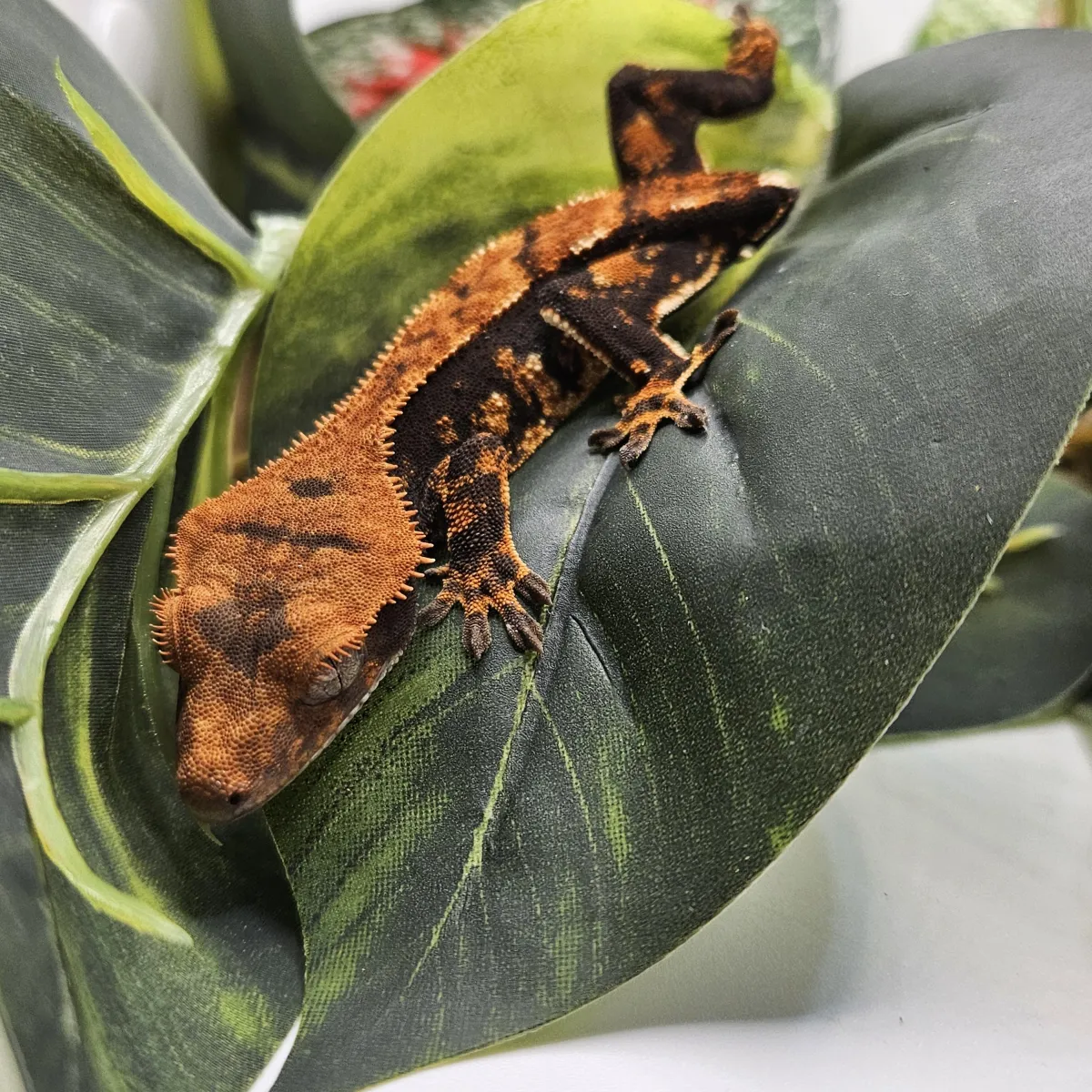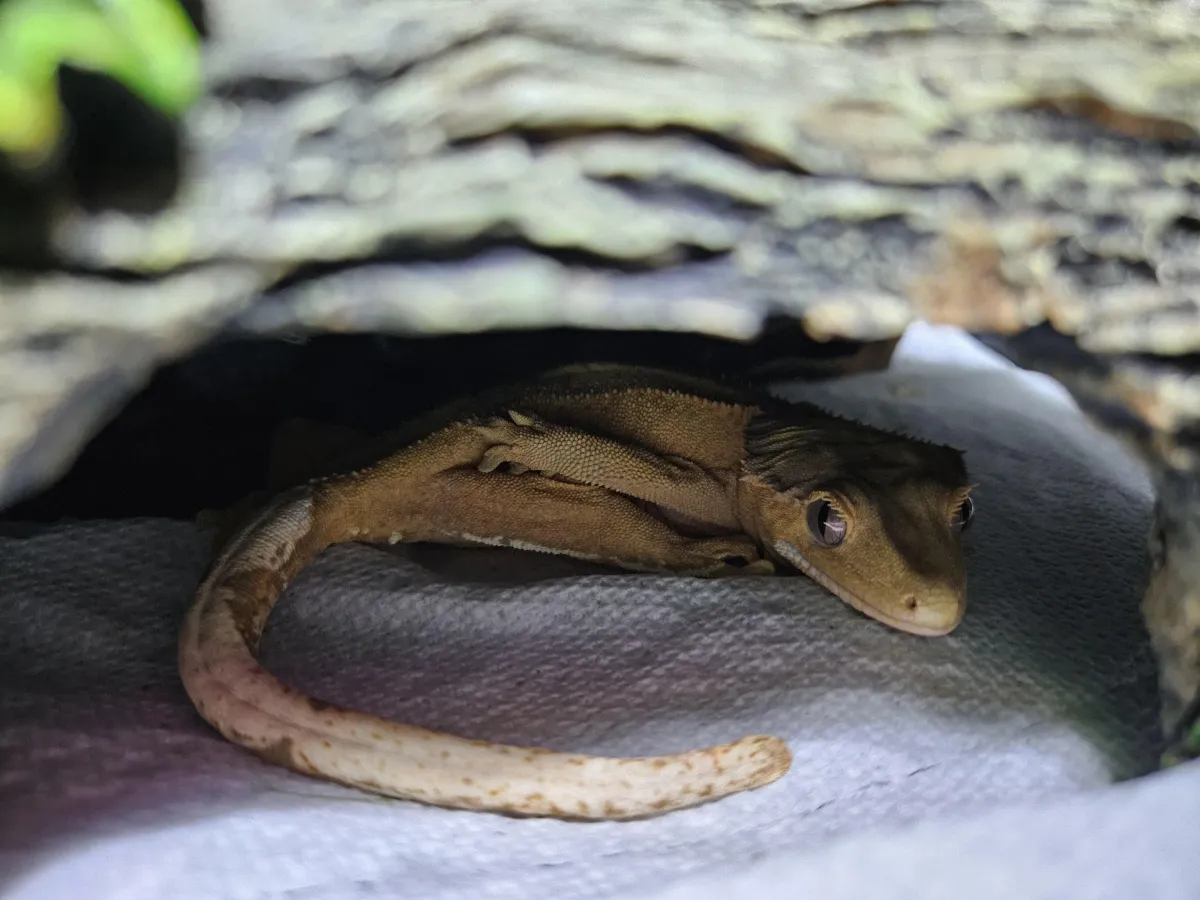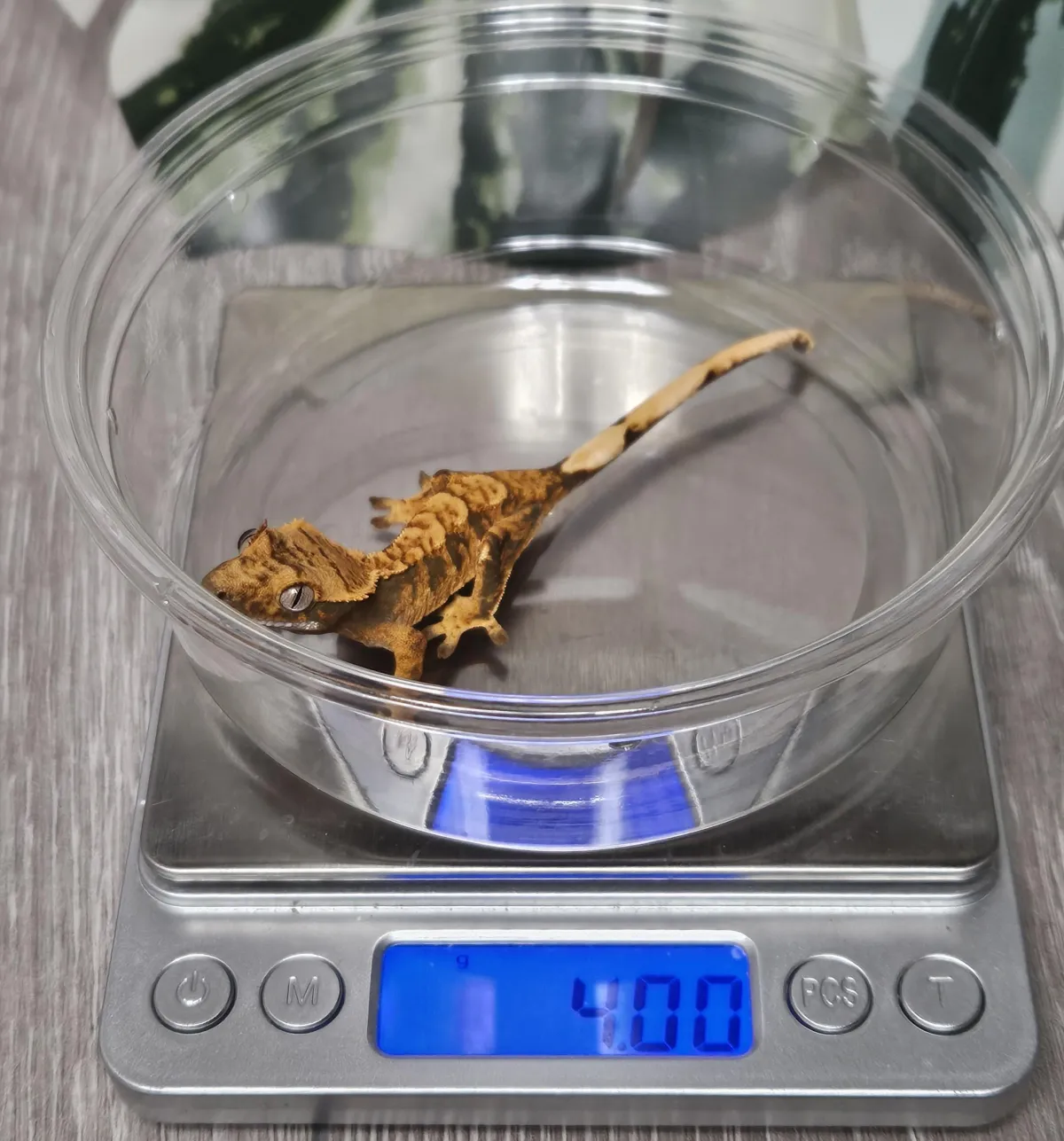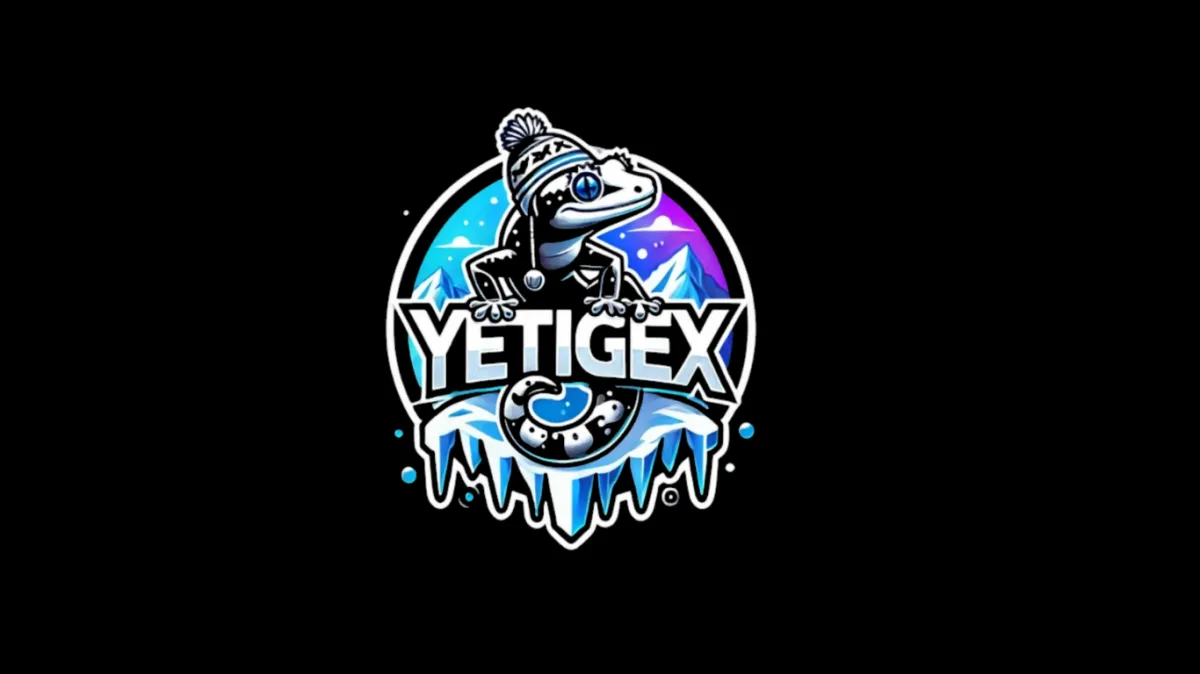Your Guide to
Thriving Gecko Care
Bringing home a crested gecko is exciting! Whether you're new to geckos or experienced with reptiles, this guide covers everything you need to keep your gecko healthy and happy.
Learn how to set up the perfect habitat, choose the right food, and maintain proper humidity and lighting. Scroll down for clear, step-by-step care tips to help your gecko thrive.
Basic Care for Crested Geckos
When picking up your gecko, keep them in their shipping container until you get home.
Once home, set up fresh food and a small, shallow bowl of water in their enclosure.
Avoid handling your gecko for the first 3–5 days to help them adjust to the new sounds and smells.
Simply mist their enclosure and "tuck them in" at night. You can tidy up their space and offer food every three days.
When you start handling them, they may be nervous at first, but don’t worry—they’ll soon get comfortable with you!

Feeding
Crested geckos thrive on a
powdered Crested Gecko Diet (CGD)—I recommend Repashy or Pangea for the best nutrition. These diets contain essential minerals to keep your gecko’s bones healthy.
Feed CGD three times a week, following the mixing instructions on the label. You can offer treats like crickets or dubia 1–2 times a week, but these should never replace their main diet.
If you have an egg-laying female, be sure to add extra calcium to her food for proper nutrition.
Housing
Crested geckos do best in
tall enclosures with plenty of foliage, horizontal perches, and ledges. Smaller geckos thrive in
smaller enclosures since it helps them find food easily and supports proper growth.
Once your gecko reaches
20–25 grams, it's time for a larger setup:
12x12x18 or 18x18x24 for adults
Common enclosure types include
PVC, glass, and ventilated storage tubs. If you have cats, PVC enclosures offer the best protection.
Décor
Geckos love foliage, hides, and vines. These are essential for their well-being. Remember adding foliage increases the surface area inside the tank. If your gecko is having trouble finding food or trouble gaining weight, remove some of the foliage but provide enough for them to climb and hide.
Substrate
For younger geckos, paper towels are the safest option. They prevent accidental ingestion of loose substrate like dirt or Eco-Earth, which can cause impaction. Paper towels also make it easy to monitor your gecko’s health—if you see little poops, you know they’re eating!
Adults are less likely to swallow non-food materials and typically spit out any dirt. While impaction is rare, it’s best to keep your gecko on paper towels until they reach
25–30 grams to minimize any risk.

Humidity
Crested geckos need a humidity spike in the evening with a dry-out period during the day for proper hydration and health.
Evening/Night:
Humidity should reach 80–90%. Achieve this by misting the side walls and foliage to create dew drops for your gecko to drink.
Always use room temperature water.
Daytime:
Humidity should stay between 40–60% to prevent excessive moisture buildup.
🚫Do NOT spray the paper towel
—this can cause mold growth
🚫Never use a fogger—it can lead to dangerous respiratory infections

Lighting and Temps
Crested geckos do not require any special lights or heat. A normal day/night cycle and ambient lighting are fine. They will thrive with temps between 72-78°F. Their threshold is 62-80°F but will become sluggish with slower metabolism below 68°F.
ANY TEMPS OVER 82°F IS LETHAL.
It is advised to never keep your gecko housed by a window or drafts due to fluctuating temps.
Extras
Hydrometers/Thermometer combos make a great addition to your gecko's enclosure. This will take all the guesswork out. I recommend picking one up from your local hardware store as the inexpensive ones at pet supply stores are rarely reliable. A kitchen scale (grams) is also a handy tool to track your gecko's growth rate.

Get in Touch
Have questions?
Ready to start your gecko parent journey?
We’d love to hear from you! Reach out to us through our Contact Page or send us a message on social media. We’re here to help you every step of the way.

Care
Passion and commitment.

Excellence
Top-notch services.

Integrity
Honesty and transparency.

FOLLOW US
COMPANY
CUSTOMER CARE
Copyright 2024 . All Rights Reserved.
